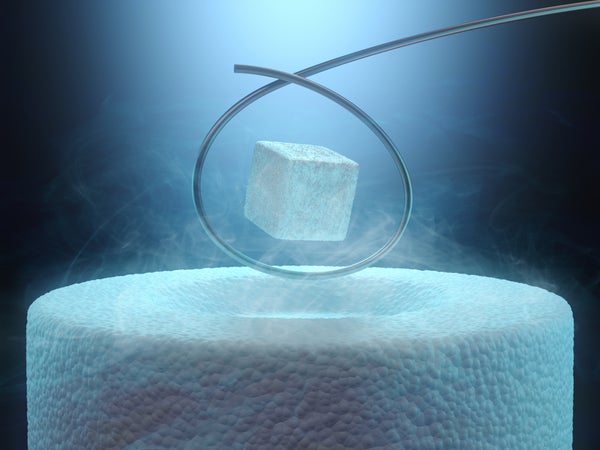The Nobel Prize in Physics 2016 was split, with one half going to David J. Thouless at the University of Washington, and the other half going to F. Duncan M. Haldane at Princeton University and J. Michael Kosterlitz at Brown University. The Prize was awarded for the theorists’ research in condensed matter physics, particularly their work on topological phase transitions and topological phases of matter, phenomena underlying exotic states of matter such as superconductors, superfluids and thin magnetic films. Their work has given new insights into the behavior of matter at low temperatures, and has laid the foundations for the creation of new materials called topological insulators, which could allow the construction of more sophisticated quantum computers.
Topology is a branch of mathematics that studies properties that only change incrementally, in integer steps, rather than continuously. Thors Hans Hansson, a physicist at Stockholm University who served on this year’s Nobel Committee, explained the core concept of topology during the awards announcement by pulling a cinnamon bun, a bagel and a Swedish pretzel from a bag. “I brought my lunch,” he joked, then explained that, to a topologist, the only difference between the three foods was the number of holes in them, rather than their taste. A cinnamon bun has no holes, whereas a bagel has one, a pretzel two. To a topologist, then, the bun would fall in the same category as a saucer, whereas the bagel would be paired with a cup and a pretzel with a pair of spectacles. Thouless, Kosterlitz and Haldane’s prize-winning insights revolve around the idea that these same sorts of “topological invariants” could also explain phase changes in matter, albeit not familiar ones such as a liquid freezing to a solid or sublimating to gas. Instead, the phase changes the theorists studied took place chiefly in thin two-dimensional films cooled to cryogenic temperatures.
The first insight came in the early 1970s, when Thouless and Kosterlitz worked together to overthrow the long-held consensus that phase transitions such as superconductivity (the flow of current without resistance) and superfluidity (a fluid possessing zero friction) simply cannot occur in two-dimensional systems due to thermal fluctuations, even at absolute zero. They found instead that cold two-dimensional systems could in fact undergo phase transitions through a totally unpredicted phenomenon, the formation of pairs of vortices at very low temperatures that then suddenly drift apart as the temperature rises past a certain thermal threshold. This “KT transition” (for “Kosterlitz-Thouless”) is universal, and has been used to study superconductivity in thin films as well as to explain why superconductivity dissipates at higher temperatures.
On supporting science journalism
If you're enjoying this article, consider supporting our award-winning journalism by subscribing. By purchasing a subscription you are helping to ensure the future of impactful stories about the discoveries and ideas shaping our world today.
Next, in the 1980s, Thouless and Haldane each studied how the conductivity of electricity in quantum systems followed topological rules. Thouless’s work examined the quantum Hall effect, a previously known phenomenon in which strong magnetic fields and cold temperatures in thin layers of semiconductors cause electric conductance to change only in precise integer steps, rather than continuously. The phenomenon had eluded explanation until Thouless surmised the electrons in such systems were forming what is known as a topological quantum fluid, acting collectively to flow only in integer steps. Independently, Haldane showed that topological quantum fluids can form in semiconductor layers even in the absence of strong magnetic fields, building on his earlier predictions of similar topological behavior in one-dimensional chains of magnetized atoms.
Together, the insights from Thouless’s and Haldane’s work have proved crucial in developing and understanding topological insulators, novel substances that block the flow of electrons in their interiors while simultaneously conducting electricity across their surfaces. This unique property could make topological insulators useful for ferreting out new types of fundamental particles, and for forming circuitry within quantum computers. Scientists are already discussing and in some cases making other even more exotic materials, topological superconductors and topological metals that each hold vast potential for new applications in computation and electronics.
This work “has told us that quantum mechanics can behave far more strangely than we could have guessed, and we really haven’t understood all the possibilities yet,” Haldane said in a telephone interview. “We have a long way to go to discover what’s possible, and a lot of these things were things that one wouldn’t have initially dreamed were possible.”
